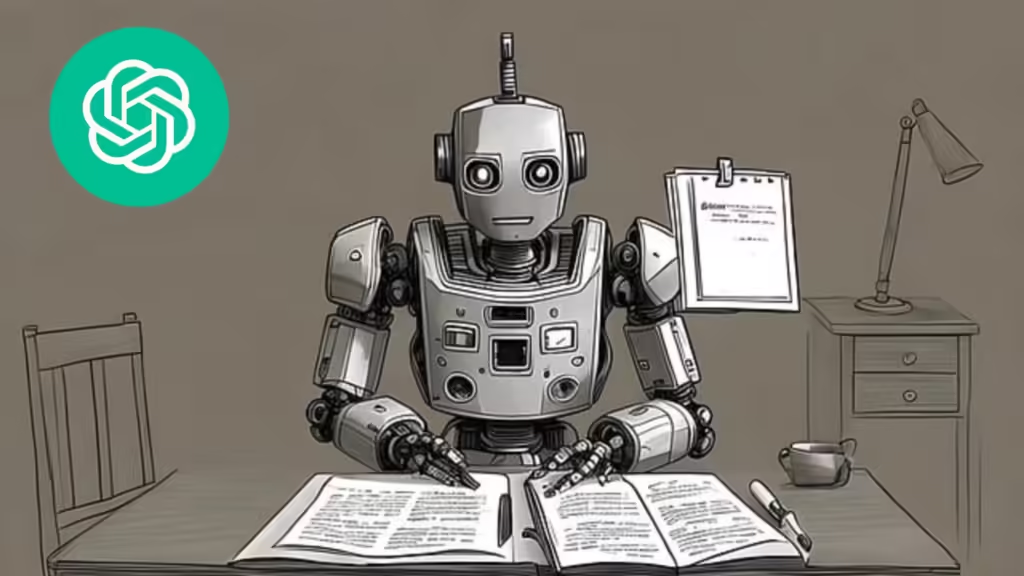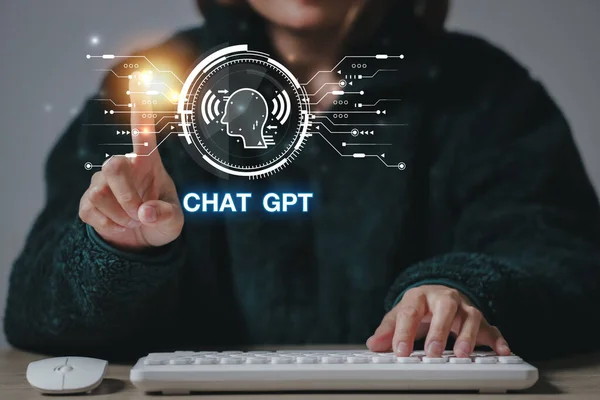Introduction:
Artificial Intelligence (AI) is significantly impacting various sectors, and education is no exception. Among the AI tools that are transforming the learning landscape, ChatGPT is one of the most prominent. Developed by OpenAI, ChatGPT is a language model that interacts with users through natural language, offering help with everything from answering questions to assisting with complex research topics. Its flexibility and versatility make it a powerful tool in educational environments.
The U.S. and India, two of the world’s largest educational systems, are adopting ChatGPT to enhance learning experiences. This blog explores the role of ChatGPT in transforming classrooms, comparing its impact on both countries while focusing on its advantages and challenges. It also delves into the specific ways AI will change the Indian education system, examining whether ChatGPT benefits Indian students and teachers alike.
ChatGPT in the U.S. Classroom: A New Era of Learning
Personalized Learning for Students
In the U.S., AI-powered platforms like ChatGPT are offering a new level of personalized learning. The traditional “one-size-fits-all” teaching model is being replaced by adaptive learning systems that adjust to the specific needs of individual students. ChatGPT allows students to ask questions at their own pace, providing instant answers and explanations. This creates an environment where each student can focus on areas they find challenging while moving quickly through topics they understand.
For example, a middle-school student struggling with math can use ChatGPT for step-by-step explanations of algebraic equations, allowing the teacher to focus on more complex topics during class time. This not only frees up the teacher but also ensures that the student receives the support they need without feeling left behind.

Collaborative Learning and Critical Thinking
ChatGPT also enhances collaborative learning. In group projects, students can use AI to gather information and solve problems collectively. ChatGPT’s ability to provide diverse perspectives encourages critical thinking, which is essential in subjects like history, literature, and social sciences.
For instance, during a history project about the American Revolution, ChatGPT can provide detailed insights into different historical viewpoints, enabling students to discuss and debate their interpretations in real time. This sparks engagement and deepens understanding.
Teacher’s Assistant and Classroom Management
In addition to student benefits, ChatGPT can function as a virtual teaching assistant. Teachers can use it to develop lesson plans, quiz questions, or even generate discussion prompts. This reduces the time spent on administrative tasks, allowing educators to focus on more meaningful interactions with students.
Moreover, ChatGPT can help manage classroom queries more effectively. Instead of being overwhelmed by repetitive questions, teachers can direct students to consult ChatGPT for basic queries, such as definitions or explanations of simple concepts, while they focus on more in-depth discussions or complex questions.
How ChatGPT is Used in Education in India: A Comparative Perspective
Expanding Access to Learning Resources
In India, ChatGPT’s potential is even more transformative. India’s education system, with its vast diversity and disparities in access to quality education, stands to gain significantly from AI-powered tools. Many students, particularly in rural areas, lack access to well-qualified teachers and learning materials. ChatGPT can bridge this gap by providing 24/7 access to information and helping students learn independently regardless of their location.
For instance, a student in a rural part of India might not have access to advanced coaching centers for competitive exams like the IIT-JEE. With ChatGPT, they can ask questions related to complex topics like calculus or physics, receiving real-time answers and explanations, mimicking the benefits of private tutoring.

Language Barriers and Multilingual Support
India is a multilingual country with over 22 official languages, which often presents challenges in the education system. AI tools like ChatGPT can be programmed to understand and respond in multiple languages, ensuring that students from different linguistic backgrounds can access learning materials.
For example, a student who speaks Hindi but attends a school where the medium of instruction is English can use ChatGPT to translate concepts and ask questions in their native language. This helps bridge the language gap and allows students to grasp concepts without being hindered by language barriers.
Assisting Teachers and Reducing Workload
India’s education system is notorious for its large class sizes, which often makes it difficult for teachers to give individualized attention to students. ChatGPT can serve as a classroom assistant, answering routine questions, generating quizzes, or summarizing lessons, allowing teachers to focus on students who require more personal guidance.
Teachers in India, particularly in rural areas, often have to manage classrooms with 50 or more students. ChatGPT can take over some of the workload, such as answering repetitive student queries and allowing teachers to concentrate on engaging the class with more interactive and creative teaching methods.
Is ChatGPT Beneficial for the Indian Education System?
Accessibility and Equity
One of the most significant benefits ChatGPT offers is increased accessibility. In a country like India, where educational inequality is a pressing issue, AI can provide students from all socioeconomic backgrounds with equal access to learning materials and tutoring services.
AI-driven platforms like ChatGPT can be integrated into government-run schools or community learning centers, providing resources to students who otherwise might not have access to such technology. For instance, underprivileged students who cannot afford private tutors could use ChatGPT to enhance their learning experience, leveling the playing field for students across different regions.
Complementary to the Existing Curriculum
It is not intended to replace teachers but to complement the existing education system. Indian teachers can use it as an additional resource to reinforce the curriculum. AI tools can assist in subjects like mathematics, science, and languages by offering supplementary explanations and personalized exercises.
Challenges and the Need for Digital Infrastructure
While the benefits are apparent, ChatGPT’s integration into the Indian education system does face challenges. The digital divide is still a major hurdle. Many rural schools lack basic infrastructure like reliable internet access or computers, which are necessary to use AI tools effectively. Before AI can be fully implemented in classrooms across India, significant investments in technology infrastructure are needed.
Additionally, the Indian education system often places a strong emphasis on rote learning and memorization, which may limit the effectiveness of tools like ChatGPT that promote critical thinking and problem-solving. A cultural shift toward embracing AI-driven learning tools will require changes in both teaching methodologies and assessment systems.

How Will Artificial Intelligence (AI) Change the Indian Education System?
Shift Toward Skill-Based Learning
One of the most profound ways AI will change India’s education system is by encouraging a shift toward skill-based learning. AI tools like ChatGPT promote critical thinking, problem-solving, and creativity, all of which are essential in the modern workforce.
With the help of AI, students can develop practical skills that go beyond textbook knowledge. For example, AI-powered coding platforms can teach students how to program, offering real-time feedback and allowing them to learn at their own pace. This transition from rote memorization to skill-based education will make Indian students more competitive globally.
Data-Driven Education
AI in education also enables data-driven decision-making. Schools and teachers can use AI tools to analyze student performance, identify learning gaps, and provide personalized support where needed. ChatGPT and other AI platforms can track student interactions, offering insights into which areas need improvement, and allowing teachers to adapt their teaching methods accordingly.
For instance, if a group of students is consistently struggling with a particular math concept, the teacher can use AI-generated reports to provide targeted interventions. This data-driven approach ensures that no student is left behind.
Case Studies: The Impact of ChatGPT in the U.S. and India
Case Study 1: Personalized Learning in a U.S. Middle School
In a middle school in California, It was introduced as part of a pilot program to assist students in their daily assignments. Teachers noticed a significant improvement in student engagement and performance. Students used ChatGPT to get real-time help with homework, receive personalized explanations, and even practice problem-solving in subjects like math and science.
One 8th-grade teacher noted that ChatGPT allowed her to focus more on in-depth discussions during class, as students had already used AI to clear basic doubts. The teacher-student interaction improved, with more time available for personalized support and critical thinking exercises.

Case Study 2: AI in Rural Indian Schools
In a rural school in Uttar Pradesh, India, ChatGPT was implemented as part of an initiative to enhance learning in underserved areas. The school lacked sufficient teachers for subjects like math and science. ChatGPT was used in after-school programs to help students catch up on lessons they had missed or didn’t fully understand.
The AI platform, available in Hindi and English, provided explanations and practice exercises tailored to each student’s level. Students who previously struggled with concepts like algebra or biology showed marked improvement in their exam scores, and teachers found the platform particularly useful for managing large classes.
Conclusion: A Global Transformation in Education
ChatGPT and AI-powered tools are fundamentally changing the way education is delivered in both the U.S. and India. From personalized learning experiences and language support to helping manage large classrooms and bridging educational disparities, AI offers tremendous potential. However, challenges such as the digital divide and the need for infrastructure improvements must be addressed, particularly in India.
As AI continues to evolve, it will be exciting to see how tools like ChatGPT can further transform education, fostering a future where all students, regardless of geography or background, can access high-quality learning.